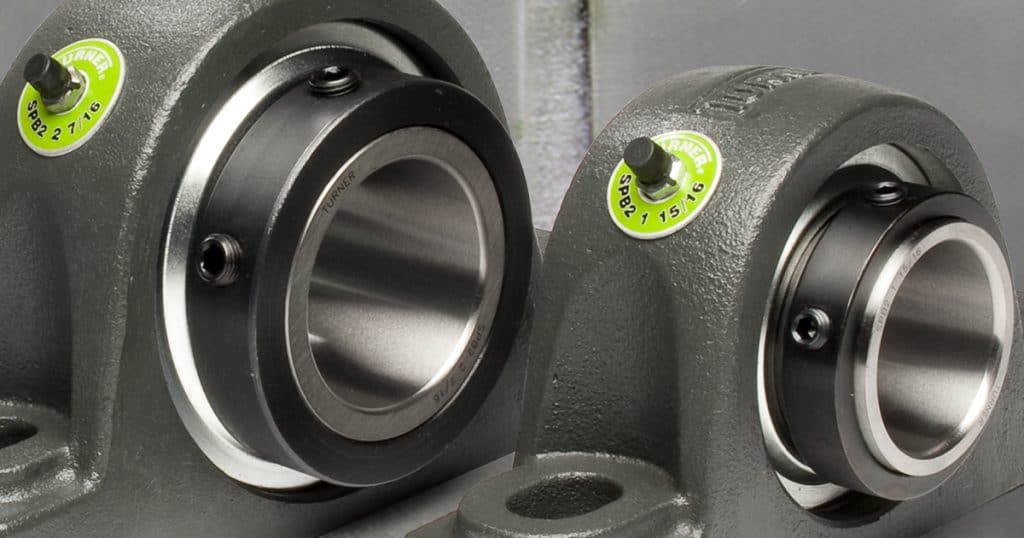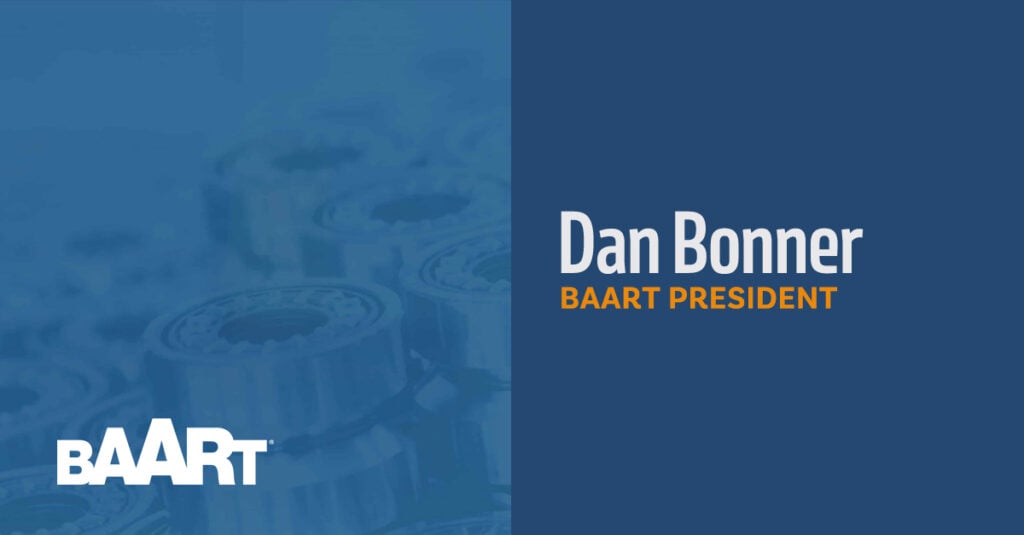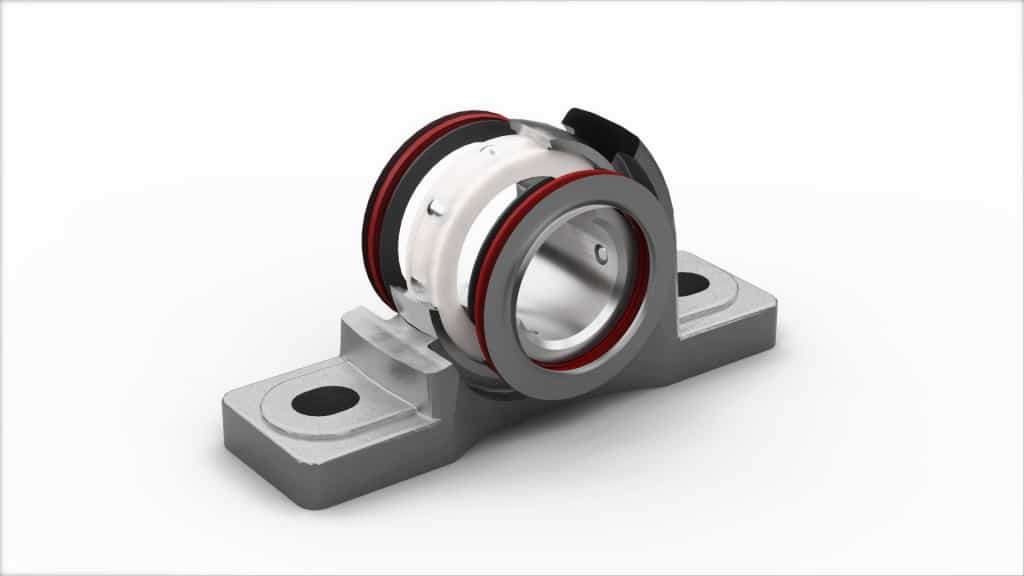Mounted Bearing Features: What’s Important?

There is an incredible number of mounted bearings on the market. It can be overwhelming to determine which bearing is best for your application. Are you struggling to find a brand that you prefer over others? Let’s discuss the features a buyer should look for when selecting a bearing.
We recommend choosing a bearing with the right features for your application. Doing this will provide you with the best possible solution.
It’s important to note that the most expensive bearing may not be the best, and the best bearing may not have every feature included. What’s best for one application potentially won’t be right for another. We’ll walk through what we consider important and how it relates to the bigger picture in power transmission.
Housing Features
We’ll begin with the features external to the bearing itself. Housings come in several different materials, with something available for every industry or need. A majority of mounted bearing applications take advantage of just a few materials: cast or ductile iron, stainless steel, and thermoplastic (which itself has numerous versions). Having the right material utilized within your application is the place to start.

Solid Base
Mounted bearings with this feature will eliminate material build-up from under the bearing. The contaminants themselves aren’t necessarily damaging to the housing unless they are also trapping moisture, which will corrode cast iron. This is not an issue with stainless steel and thermoplastics. However, having cavities under a bearing can make cleaning the surrounding area more difficult and are potentially dangerous in food-grade applications.
Grease fittings
An essential feature because improper lubrication is the number one cause of bearing failures. Having standard zerks installed in the housing gets you one step closer to a more efficient bearing. Keep in mind bearings nearly always come filled with the correct initial fill of grease.
Permanent lubrication
Otherwise reffered to as solid lube, it is an increasingly popular feature that includes some significant benefits. An oil-saturated polymer material molded into the interior of the bearing that fills all internal space without impeding the rolling elements. Some benefits include, but not limited to, containing up to 4x the amount of oil that greased bearings do, provides support to the seals, protects the rolling elements from contaminants, and the bearing will never require regreasing.
End caps
These play an important role in certain mounted bearing applications. Foremost, they help increase safety around these hazardous components, where shafts can spin at very high speeds. Additionally, they add a level of protection to the bearing insert and shaft, reducing the amount of contamination that could land on it. Having a housing machined for end caps makes installation and removal significantly quicker and simpler.
Mounted Bearing Features
Many ball bearing features have become standard these days due to the number of competing manufacturers. These features all lend themselves to efficiency and reliability. Having as many included on the mounted bearing you source will benefit your application over the long run.
Wide inner rings
These give the bearing increased contact with a shaft. A wider ring reduces the ability of the bearing to tilt on the shaft, if or when the shafting is undersized. This results in a more stable bearing, which leads to better performance and longer life.
Anti-rotation device
A small protrusion on the outer race of the bearing that fits into a recess in the housing. The inclusion of the anti-rotation device allows for a loose enough fit that will still enable the bearing to self-align, while at the same time barring the outer race from spinning within the housing. Bearing manufacturers attribute a 33% increase in bearing life to this singular feature.
Flinger seal
Bearings that include this add another level of protection. Attached to, and spinning with the inner race, it literally flings contaminants away before they reach the seal. It is a marked improvement over a standard bearing seal. When bearings see use in heavily contaminated applications, such as agriculture, the triple lip seal (L3) is hugely important in protecting the rolling elements. Keep in mind L3 seals, with the increased contact, have lower speed limits.
Bearing retainers
Sometimes referred to as a cage or separator, this is a critical part of all bearings. It controls the motion of the rolling elements, keeps them evenly spaced, and in some cases, can even aid in lubrication. There is an incredible amount of variance depending on the rolling element and the application. Materials can range from steel, bronze, reinforced nylon, and plastics. Keep in mind this is one instance where cost-cutting measures may factor heavily. Riveted steel cages are appropriate for general applications. Bearings experiencing high heat or requiring corrosion resistance utilize different materials.
Bearing steel
The steel used throughout the bearing is one of the more critical features on this list. 52100 bearing steel, first developed in the 1920s, has remained nearly unchanged specifically because it performs so well in this particular application. It is the most common bearing steel used throughout the world because it has incredible durability and fatigue strength.
Some manufacturers use lesser steels on specific components within the bearing to lower costs. For instance, not using 52100 steel on the inner race of a bearing because it sees smaller loads and stresses than the outer race can have a detrimental effect on the longevity of the bearing.
Some applications see a thermal expansion of the shafting. Expansion bearings – or floating bearings – are designed with extra room within the housing so they can move axially to accommodate the increasing length of the shafting. Without this float, once the bearing locks on to the shaft, shaft expansion would subject it to heavy thrust loads that will be catastrophic.
Locking Mechanisms
The final feature we’ll mention is how a bearing secures itself to the shaft. There are several styles available, some being more common than others. Some locking mechanisms are more of a problem solver, like in situations where shafting is slightly undersized or damaged and isn’t replaceable. Choosing a bearing manufacturer that has all locking styles available – like the adapter sleeve – can solve the issues previously mentioned.
Let’s look at the most basic locking mechanism – set screws. A necessary feature for set screw bearings is annealed set screw ports. Annealing is a heat treatment that reduces the hardness of a metal. Annealing the set screw ports allows the metal to become a little more forgiving to mechanical stresses such as shock, or when the set screw is torqued higher than recommended. Otherwise, these forces have the potential to cause the race to fracture.

Other locking styles include eccentric collars, concentric collars, and adapter sleeves. Not all applications are suitable for set screws, especially those seeing high speeds or heavy torque loads. Much of this has to do with how the mechanism locates the shaft within the bore of the bearing. However minimal, set screws will force the shaft to one side of the bearing bore. Whereas a concentric collar that maintains a full 100% contact on the shaft and keeps it centered is much better suited to high speeds.
Select a mounted bearing with the right features for you.
Not all features affect the longevity of mounted bearing. Some mounted bearing features are application-specific or make installation easier or quicker. Select bearings that include the features that are most important to you – it’s possible now to procure a bearing that fits well within your design.
Unsure which bearing is right for you? Visit the Mariner and Turner sites to explore the included standard bearing features.
Sort by category: Selection & Design
Sort by topic: Flange Bearing, Mounted Bearing, Pillow Block, Turner




